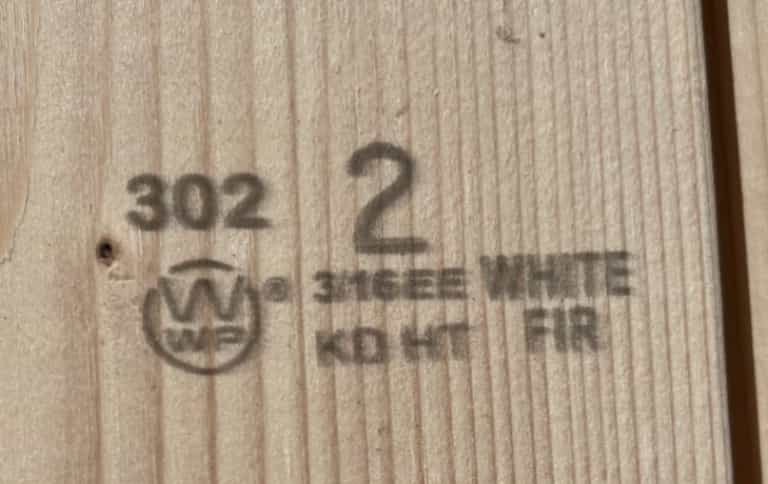Depend on Front Range Lumber to deliver quality framing lumber at competitive prices.
Front Range Lumber carries straight, well-graded framing lumber in all the most common widths and lengths, plus some harder-to-find 18’ and 20’ lengths.
You can rest assured that our buyers work directly with our suppliers on a daily basis to keep our lumberyard well-stocked with the best the market has to offer, at competitive pricing.
Grades of framing lumber.
Lumber comes is a variety of grades as determining by extensive international grading rules. For the best, most complete information, we suggest consulting https://wwpa.org.
Grading rules emphasize the number of “defects” (like knots, wane, pitch pockets, grain size, etc) over the perceived “beauty” of the wood. The rules also are applied mostly to the “best” face &/or edge of any given board. Therefore, the board can be well within grading rules and still be not suited for appearance.
Available sizes.
Front Range Lumber carries the full range of lengths, including the harder to locate 18’ and 20’. See the Available Sizes section below.
Usually, lumber pricing is NOT proportionate based on lengths. Stated differently, a 16’ board is not just twice as much as an 8’ piece.
Framing lumber species.
There are many species of wood harvested for use in wood products. In framing lumber, the most common are White Fir, Douglas fir and Southern Yellow Pine. Each has its own pluses and minuses, including availability, cost and stability in use.
SFI vs. FSC certified lumber.
SFI is the Sustainable Forestry Initiative with FSC as the Forest Stewardship Council. If a product can be certified by the FSC, it meets the ultimate standard in the best practices of harvest/production. Usually, FSC certified wood products are more expensive as very strict protocols are in place to ensure the standards themselves and the chain of “custody” of the wood. Each step in the manufacture and distribution process must be certified. SFI certification still tells you a wood product comes from a forest/source which is managed responsibility. Virtually all American and Canadian production is SFI certified at minimum.
Framing lumber grade stamps.
As sampled in the picture below, most lumber comes with a grade stamp applied to provide various information about that board. Here’s a brief explanation of what the pictured grade stamp indicates:
Grade stamp terms
- 302 – is the mill which produced this board
- 2 – is the grade of the particular piece
- WHITE FIR – is the species of the wood
- KD – Kiln dried, usually to 19% or less moisture content
- HT – Heat Treated as described below
- 3/16EE – this board has a 3/16” eased edge on the edges
- WWP – The board was graded using the Western Wood Products grading rules

HT/Heat Treated specification.
Heat treated lumber is a common requirement needed for export, including for packaging materials like crating for products to be exported. For example, if you manufacture pumps and need crating to package them for export, the lumber used in the crating must be heat treated. Virtually all construction lumber is heat treated, most commonly in kiln drying the wood. Products like OSB and plywood are by definition heat treated as heat and pressure is used during their manufacture. There are exceptions to lumber being dried; two notable categories are timbers and most cedar.
Precut studs available.
Why are studs precut? Studs (generally, 2×4 and 2×6) come in precut lengths – most usually in 92-5/8”, 104-5/8 and 116-5/8” lengths. These are used in conjunction with top and bottom plates to fabricate 8′, 9′ and 10′ tall walls respectively.
Front Range Lumber carries the full range of lengths, including the harder to locate 18’ and 20’. Usually, lumber pricing is NOT proportionate based on lengths. Stated differently, a 16’ board is not just twice as much as an 8’ piece.
| Lengths: | 8′ | 10′ | 12′ | 14′ | 16′ | 18′ | 20′ |
|---|---|---|---|---|---|---|---|
| 2×4 | |||||||
| 2×6 | |||||||
| 2×8 | |||||||
| 2×10 | |||||||
| 2×12 |
Framing lumber references:
- Western Wood Products Association: https://wwpa.org
- SFI – Sustainable Forestry Initiative: https://www.forests.org
- FSC – Forest Stewardship Council: https://fsc.org

